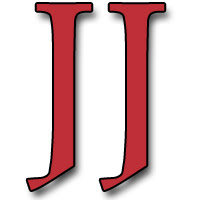 |
| California Chrome Wins the Preakness. Photo: Jay Baker. |
Will history be made this Saturday?
We will find out with the 146th running of the Belmont Stakes, the third and final leg of horse racing’s Triple Crown.
The Triple Crown is a peculiarity in sports. In college sports, we cheer on the Wildcats. Most of us have at least a preferred NBA, NFL, MLB, or NHL team, if we aren’t a rabid fan of one or more.
But horse racing is different. A young foal is born and three years later is at the pinnacle of its racing career. The following year, a new set of horses are ready to race. One could draw similarities here to the new crop of players in each of Calipari’s freshman classes, but each of those basketball players wears on the front of their jerseys the real source of our pride: KENTUCKY.
There isn’t the same sort of common ‘team’ interest in horse racing.
So on the first Saturday of May, we watched as California Chrome galloped ahead of his competition. The favorite to win under the twin spires of Churchill Downs did so by one and three-quarters lengths.
Immediately, we rallied around that chestnut horse who hadn’t set hoof in Kentucky until just a few days before the Derby.
And we cheered California Chrome to a win across the finish line some one and a half lengths ahead of second-place finisher Ride On Curlin when he competed in the Preakness Stakes two weeks after the Derby.
With two legs of the Triple Crown won, things got interesting. I don’t know about you, but when a horse wins both the Derby and the Preakness, then I really look forward to the Belmont. Three weeks seems too long.
California Chrome is the 34th to have won the first two legs of the Triple Crown. Since 2000, we’ve seen War Emblem, Funny Cide, Smarty Jones, Big Brown, and I’ll Have Another in the same position. But all of these have come up short at the track in Belmont, New York. In fact, I’ve never seen a Triple Crown winner. The last one occurred before I was born.
In the 1970s, three horses won the Triple Crown. And their names roll off your tongue. Secretariat. Seattle Slew. Affirmed. They join the eight other horses who have won each of these three prestigious races.
The Belmont Stakes is the oldest of the three races comprising the Triple Crown. It was first run in 1867. The newest race is the Kentucky Derby, which was first won in 1875. The term “Triple Crown” did not exist until a writer with the Daily Racing Form coined the term in 1930.
And today we look back on a 35-year drought with no Triple Crown winner, the longest drought in history. Will we have a new Triple Crown winner in California Chrome?
Or am I just California dreaming’?

This column originally appeared in the Jessamine Journal.
It should not be republished without permission.












 Hello everyone, my name is
Hello everyone, my name is 




